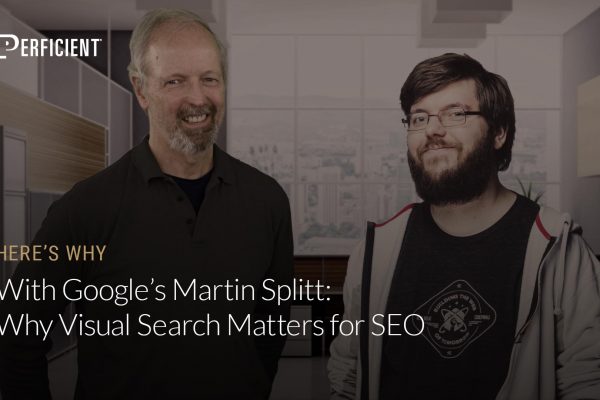Google made several announcements at Google I/O in early May of 2019 about search and SEO. Images were one of the topics mentioned during the announcement.
In this episode of the popular Here’s Why digital marketing video series, Google’s Martin Splitt joins Eric Enge and explains how visual search is vital to SEO and why Google places emphasis on high-resolution images.
Don’t miss a single episode of Here’s Why. Click the subscribe button below to be notified via email each time a new video is published.
Resources
Transcript
Eric: Hey, everybody. I’m Eric Enge. Today, I’m pleased to tell you that I’ve got Martin Splitt from Google joining me. He is a Webmaster Trends Analysts based out of Zurich. Thanks for joining us today, Martin.
Martin: Thank you very much for having me, Eric, and hello everybody.
Eric: Today we’re going to talk about the announcements at IO that related to images and visual aspects of search. To start, maybe you could talk a little bit about the announcement made about high-resolution images.
Martin: As you know, we now have the new Discover Feed. If you’re using an Android device, you have it on your home screen. If you’re using google.com on mobile, then you will see that there. The search app on Android has it as well, and it can drive a lot of traffic, but also it is very keen on having good visuals. The question then is, what kind of visuals should we be using?
We would like to use high-quality images that are a little bigger than usual— that would be nice. But we want our webmaster staff to have full control over what they’re giving us to show and discover, and also, we want to use these images in other surfaces.
We have smart home devices with displays now: we have the Assistant, and we have many different surfaces that can show visual content and promote your site, basically. We announced the upcoming possibility to opt-into sharing high-resolution visual content with us: basically, images in high resolution that we use on different surfaces and different devices, and also in Discover Feed and other features. We have no timeline yet for when that opt-in program will start.
Eric: So how do you actually opt in or enable the feature?
Martin: The way to opt in is probably going to be based around structured data. You would use the regular optimized fast images for your website, so that your web content loads fast on user devices, but you would include a little bit of structured JSON-LD that points us to a high-resolution image that we can use. And probably, there will be settings around that in search console, as well.
Eric: Got it. You mentioned that this will be part of the Discovery feature, for example. Do you see the high-resolution images ever coming into play via regular Google Search or image search?
Martin: Probably, but at this point, I only know that we will do this in Assistant, especially the smart displays that we have with Assistant and in Discover, but there’s probably more to come.
Eric: Got it. And how about 3D images? That’s the other thing that you talked about at IO.
Martin: Yes, absolutely. Right now, we are working with a few partners on bringing AR capabilities and 3D models to Google Search. There are plenty of interesting use cases. If you have educational use cases, or if you have things like furniture or real estate, those might be really interesting to try out and have a more visual approach, as these are, by definition, very visual things. Lots of people are visual learners. You definitely want a special understanding of, let’s say, a piece of furniture. There are use cases where it makes sense, and we are piloting that.
There are multiple teams working towards a common goal in this case. We have teams that work with WebVR and AR—actually, it’s called WebXR, which is like AR and VR in one specification—to bring these possibilities to the web. There are also teams working to make 3D models smaller—that would be the Draco Mesh Compression. We also work with other teams to make developers more comfortable and make it easier for developers to work with 3D content, as well. And we are participating in the standardization effort that is GLTF, which is basically like a JPEG format but for 3D models.
Eric: That’s awesome. I think the functionality and the things that you’re putting into visual search these days are really amazing.
Martin: Thank you.
Eric: So how important is visual search going to be going forward?
Martin: I think visual search is one of the most underrated search experiences that we have right now. I mean, image search can be a fantastic funnel for additional traffic, especially if what you have is a very visual thing. If your product is very visual, if your niche is about visual things—let’s say food or tourism or specific kinds of marketing—then I can definitely see that visual will become more important for users as we also offer them more engaging and more visual ways to discover and interact with content.
Eric: Great. Thanks so much for joining us today, Martin.
Martin: It’s been a pleasure. Thank you very much for having me, Eric.
Don’t miss a single episode of Here’s Why. Click the subscribe button below to be notified via email each time a new video is published.
See all of our Here’s Why Videos | Subscribe to our YouTube Channel

